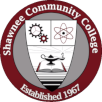 Policy
Policy
Policy Type: Board- Strategic Outcomes
Responsible: President
Related Policies: B1002
Linked Operating Standards: Axxx Transfer Programming Monitoring Report Development
Related Laws: 110 ILCS 152/, 20 U.S.C. § 1070 et seq.
Related External Standards: IAI, ICCB Admin Rules; Student Clearinghouse: IPEDS
HLC Criterion: 2B2B
The institution presents itself accurately and completely to students and the public with respect to its educational programs and any claims it makes related to the educational experience.
, 3A3A
The institution maintains learning goals and outcomes that reflect a level of rigor commensurate with college-level work, including by program level and the content of each of its educational programs.
, 3B3B The institution’s educational programs engage students in collecting, analyzing and communicating information; in practicing modes of intellectual inquiry or creative work; and in developing skills adaptable to changing environments., 3E3E The institution provides student support services that address the needs of its student populations, as well as the teaching resources and infrastructure necessary for student success., 3F3F The institution improves its curriculum based on periodic program review., 3G3G The institution’s student success outcomes demonstrate continuous improvement, taking into account the student populations it serves and benchmarks that reference peer institutions., 4A4A
The institution’s administrative structures are effective and facilitate collaborative processes such as shared governance; data-informed decision making; and engagement with internal and external constituencies as appropriate.
, 4C4C
The institution engages in systematic strategic planning for quality improvement. It relies on data, integrating its insights from enrollment forecasts, financial capacity, student learning assessment, institutional operations and the external environment.
Monitoring Reports
Policy Statement
Transfer programming is central to the College’s mission of expanding opportunity, advancing equity, and strengthening the region’s social and economic vitality. These courses and programs provide students with affordable pathways to further their education, prepare them with foundational skills for long-term success, and connect the College to the broader higher education ecosystem. The College affirms its responsibility to the community to sustain and continually improve transfer programming that enables students to achieve their educational goals and complete their higher education journeys.
The Board recognizes that:
- Students value accessible transfer opportunities that expand their choices and help them achieve their long-term educational and career goals.
- The community values equitable outcomes that strengthen social and economic mobility for all residents.
- Education partners value alignment of curriculum and advising that creates a seamless pathway from high school through higher education completion, supporting students in achieving their educational and career goals.
- Employers value graduates who demonstrate communication, critical thinking, problem-solving, and adaptability — skills strengthened through general education and transfer coursework.
To honor these values, the Board expects transfer programming to:
- Ensure Student Transfer Readiness – Students completing transfer-designated programs shall demonstrate knowledge and skills aligned with general education and major prerequisites.
- Support Equitable Outcomes – Transfer pathways shall be designed and assessed to close achievement gaps among student populations.
- Facilitate Seamless Articulation – Programs shall be aligned with education partners to promote credit transferability and minimize barriers to student progression.
- Demonstrate Results Through Evidence – Annual Monitoring Reports shall provide evidence of performance using SCCES Key Performance Measures and Indicators, including:
- Course success in transfer-designated courses.
- Transfer-readiness benchmarks.
- Student transfer rates to four-year institutions.
- Equity gaps in transfer outcomes.
The Board will assess institutional performance relative to this policy through annual Monitoring Reports that provide clear and sufficient evidence of results.
| Change Log | Governance Unit: Board of Trustees |
| Date | Description of Change |
| 03-07-22 | Initial Adoption |
| 02-16-23 | Added Deployment Measures |
| 03-21-24 | Reviewed, No Changes |
| 11-21-24 | Reviewed, No Changes |
| 08-21-25 | Board Reviewed, Minor Grammatical/Punctuation Changes; HLC Criterion Updated |
| Major revision. Aligned w/ Monitoring Report expectations and Admin OS | |
| 11-20-25 | Board Approved |
